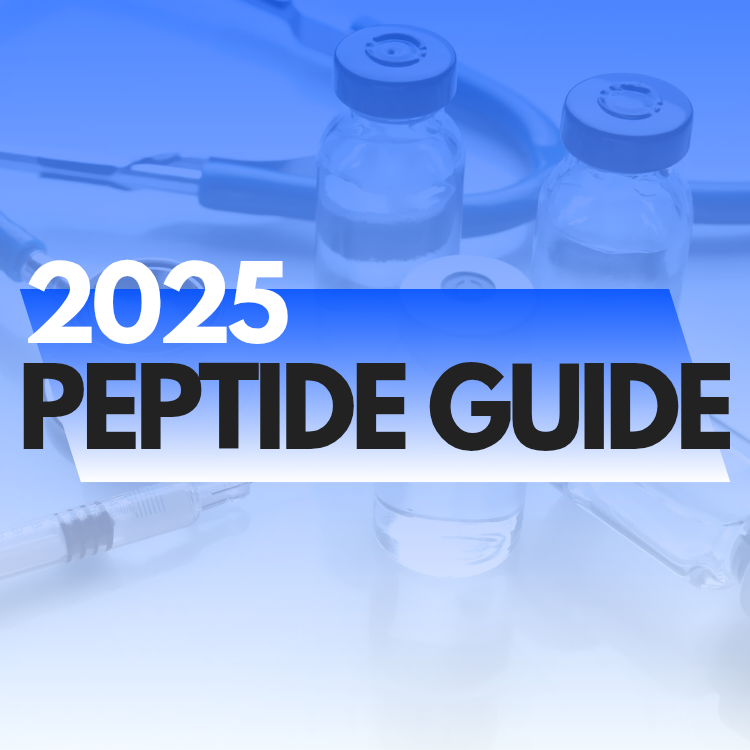The Complete 2025 Guide to Research Peptides: What Scientists Need to Know

In recent years, research peptides have emerged as one of the most dynamic fields of scientific exploration. With applications spanning from metabolic disease studies to neurocognitive research and tissue regeneration, peptides offer exciting potential for scientific breakthroughs. As we enter 2025, understanding how peptides function, how they are utilized in research, and best practices for handling them is critical for advancing experimental outcomes.
This comprehensive guide will equip scientists, researchers, and clinicians with essential knowledge about peptides, including molecular structure, research applications, procurement standards, and practical handling.
What Are Research Peptides?
Research peptides are short chains of amino acids (typically 2–50 residues) that mimic naturally occurring sequences in the human body. Because peptides can interact precisely with cell receptors, they offer powerful ways to modulate biological functions without the complexity of larger proteins.
Peptides are used exclusively for in vitro or clinical research and are not intended for human consumption unless expressly approved by regulatory authorities.
Key Characteristics:
- High specificity for target receptors
- Low molecular weight compared to proteins
- Rapid degradation within biological systems (often necessitating stabilization strategies)
- Diverse research applications
Primary Research Applications of Peptides
Peptides are currently being researched across a wide variety of fields, including but not limited to:
- Metabolic Disorders
Example: Semaglutide and Tirzepatide are studied for their effects on glucose regulation and weight loss.
- Muscle and Tissue Repair
Example: BPC-157 and TB-500 promote angiogenesis and cellular repair in musculoskeletal injuries.
- Neurocognitive Enhancement
Example: Semax and Selank are being evaluated for memory improvement, anxiety modulation, and neuroprotection.
- Anti-aging and Longevity
Example: Epithalon and MOTS-C show promise in mitochondrial health and telomere length maintenance.
- Immune Modulation
Example: Thymosin Alpha 1 is studied for boosting innate immunity and adaptive immune response.
How Research Peptides Work: Mechanisms of Action
Peptides operate by binding to specific cellular receptors, initiating a cascade of biological events such as:
- Upregulating or downregulating gene expression
- Enhancing or inhibiting enzymatic activity
- Modulating neurotransmitter release
Their precision targeting allows for nuanced study of biological pathways with fewer off-target effects compared to larger biologics or small molecule drugs.
Key Factors to Consider When Procuring Research Peptides
To ensure credible results, sourcing high-quality peptides is non-negotiable. Researchers should look for:
- Purity ≥ 98%
- Certificate of Analysis (COA)
- Proper Storage and Handling Guidelines
- Freeze-dried peptides require storage at ≤ -20°C.
Choose companies committed to research integrity, domestic manufacturing, and transparent testing standards (e.g., BasePeptide.com).
Best Practices for Handling Peptides in Research Settings
Use Sterile Techniques:
- Always reconstitute using bacteriostatic water or sterile solvents.
- Minimize Freeze-Thaw Cycles: Aliquot into small volumes post-reconstitution to avoid degradation.
- Protect from Light: Some peptides are photosensitive and should be stored in amber vials.
- Label Clearly: Always document peptide name, concentration, solvent used, and reconstitution date.
Trends to Watch in 2025 and Beyond
The peptide research landscape continues to evolve rapidly. Key trends include:
Multi-agonist peptides: Compounds like Tirzepatide that activate multiple pathways simultaneously.
Synthetic peptide analogs: Designing more stable, longer-lasting peptide structures.
Nasal delivery and transdermal applications: Expanding delivery methods beyond injections for targeted studies.
Personalized peptide therapy research: Tailoring peptide combinations to individual genetic profiles.
As research peptides gain even broader scientific interest, the importance of rigorous sourcing, handling, and experimental design cannot be overstated. By understanding the molecular mechanisms, maintaining strict lab protocols, and staying informed about emerging developments, today's researchers can contribute to groundbreaking advances across medicine, biotechnology, and beyond.
If you're seeking high-purity, research-grade peptides backrd bye a guarantee of 99% purity, explore our catalog at BasePeptide.com.
Disclaimer: All products mentioned are for laboratory research use only. Not intended for human consumption, therapeutic use, or veterinary use.
